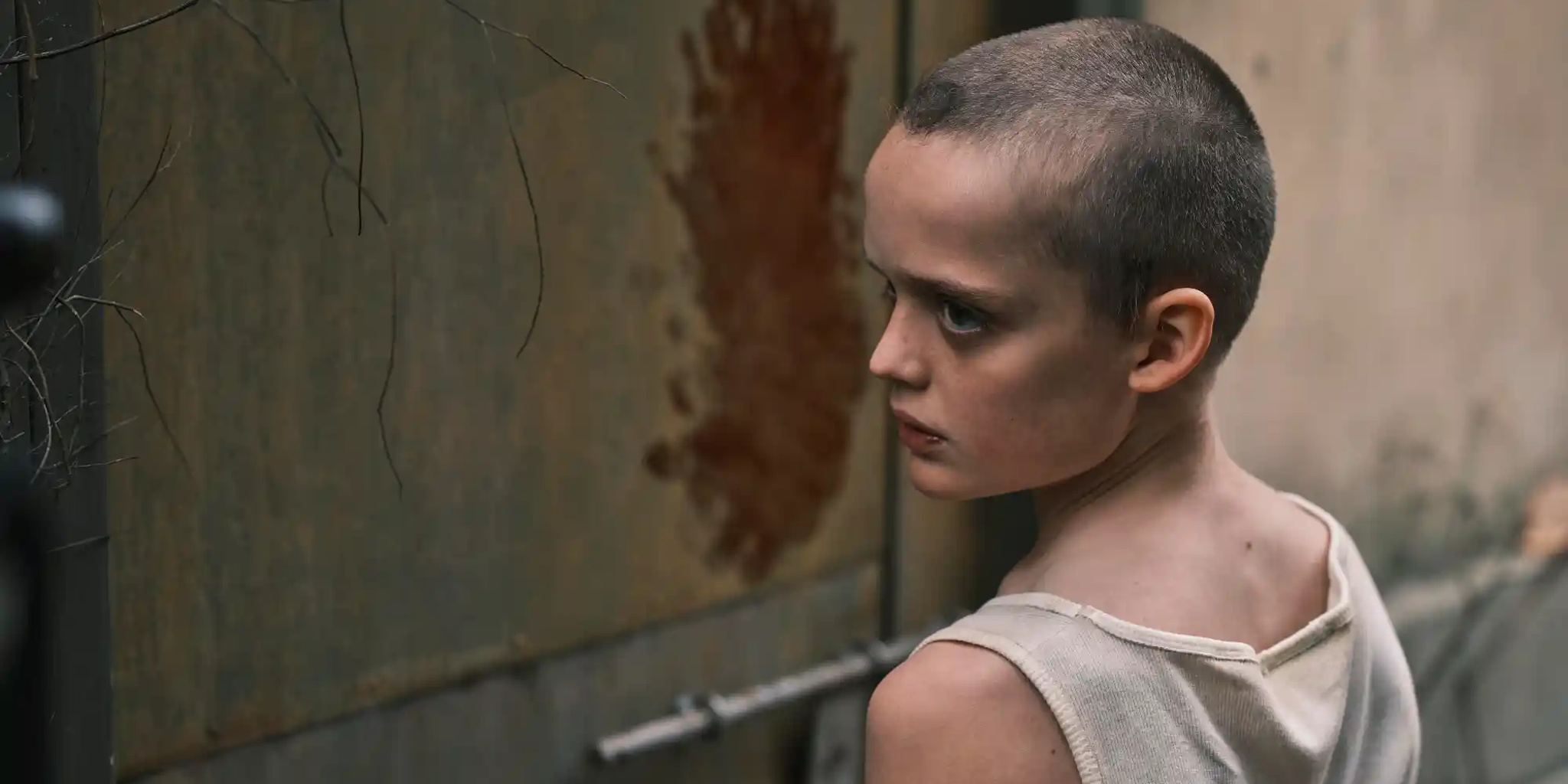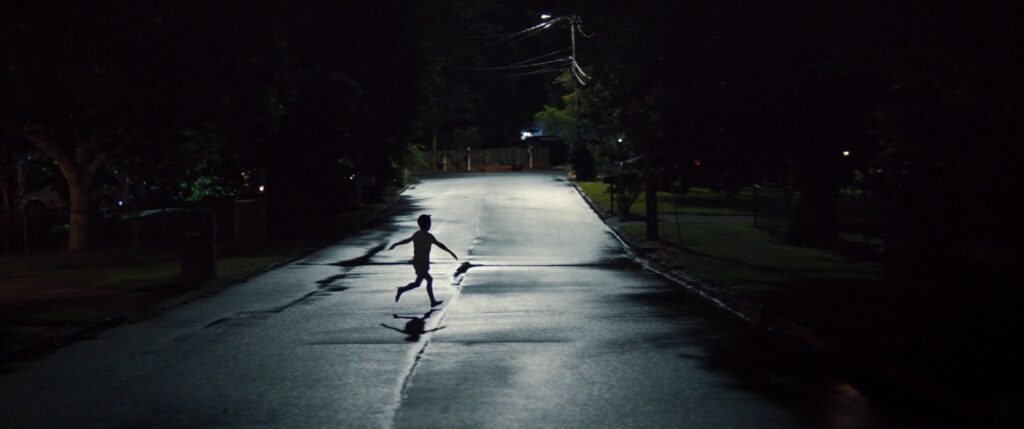As an example of contemporary horror’s current state, Danny and Michael Philippou’s Bring Her Back initially comes off as more of the same. Given the straightforward title and the broad idea of a character reacting and rebelling against the inevitability of death, the directors’ latest not only recalls their highly successful feature debut, Talk To Me, but also other recent features that have dealt with similar ideas. Horror films often confront the trauma of death, of course. Horror and grief can be a provocative combination, as seen with David Cronenberg’s thoughts on the grieving process in The Shrouds. However, such morbid themes can also be a crutch to hide a limp story, as in the case of The Monkey. Bring Her Back rides the line between those two films.
After witnessing their father die of a violent brain aneurysm, teenagers Piper (Sora Wong) and her older stepbrother, Andy (Billy Barratt), are forced into the foster-care system. While Andy has a harder time being uprooted from his life, Piper immediately finds someone wanting to adopt her. Tagging along with his step-sibling to protect her, the brother and sister are whisked away to a far-off house in the middle of the woods owned by ex-counselor Laura (Sally Hawkins). She welcomes Piper with open arms while simultaneously giving the cold shoulder to Andy, often forgetting his name and obviously being less enthused by his presence. As they get used to their new home, the siblings soon meet the other occupant of the house, an orphaned boy named Oliver (Jonah Wren Phillips), whom the new arrivals discover strangling his adoptive mother’s cat in an empty pool.
From there the strangeness escalates. Laura tells Piper and Andy of Cathy, her recently deceased daughter who died drowning in the backyard pool, worryingly noting her similarities to Piper. Oliver is kept locked in a room all day and night, apparently starving but never speaking a word. As their time in this strange foster home wears on, Andy’s trauma of his father’s death intensifies via recurring nightmares and visions. This builds to the film’s clumsily hidden early reveal: Laura is enacting a violent ritual to bring back the spirit of Cathy and allow her to inhabit a new body. However, this twist ultimately makes Bring Her Back more compelling, both as a showcase for the Philippou brothers’ ante-upping facility with genre conventions and as a demented character study centered on a skillful performance from Hawkins.
As the movie builds towards its doomed conclusion, the directors attempt to outdo the brutality of Talk to Me. In their previous feature, the filmmakers relished creating grotesque sights intended to shock and awe viewers, such as a possessed teenager attempting to pluck out their own eyeball. Bring Her Back doubles down on this impulse and indulges in even more disturbing body horror, aided by Emma Bortignon’s stomach-churning sound editing. Ever wanted to see (and hear) a child eat a wooden table to the point of breaking their teeth or consume a knife blade-first? The Phillippou’s devotion to discomfiting their audience adds to the film’s odd sense of fun, pulling it back from the brink of self-seriousness where it occasionally teeters. From the pristine filmmaking, similar premise, geometric locations, and the A24-branded distribution, Bring Her Back at times reads like a low-effort Hereditary clone.
Thankfully, the duo ultimately avoid that trap. Beyond the absurd gross-out imagery that helps the film stand out, what truly anchors Bring Her Back is Sally Hawkins. Attuned to the bizarre wavelength of the film, she manages to balance her performance on variable tones. In one scene, she can be a comically batty mother figure attempting to bond with her two new foster kids – wearing bright clothing to their father’s funeral, for example, or having a fun night drinking with them – like a less campy version of Sleepaway Camp’s Aunt Martha. In another, Hawkins’ performance adds nuanced but emotionally intense layers to the character as Laura expresses her prolonged grief for Cathy. And in others, Hawkins becomes downright unsettling as Laura becomes hellbent on the ritual that will finally bring her daughter back, no matter how many people have to die in the process. Through Hawkins, Laura rises to being a multifaceted, vulnerable person, prompting the audience to react with fear, but also laughter and understanding. She gives substance to a script that, in less capable hands, might have presented the character as a stereotypical over-possessive mother who deserves little sympathy.
In giving Laura depth, however, the film leaves the rest of the characters feeling less developed. While Wong and Barratt give good performances, their dynamic is less fleshed out beyond the basic groundwork of their relationship. (The most definitive this gets is in the two of them using “grapefruit” as a safeword, a private tic that proves hit or miss in the film’s emotional moments.) Andy and Piper only become interesting once they collide with Laura’s plans, with one proving to be vital in her plan while the other becomes an obstacle. Their exact fates are initially ambiguous, but based on the feel-bad ending of the directors’ prior work, one could be forgiven for assuming that the Philippous were aiming for an even nastier conclusion for their sophomore feature.
It’s in that aspect that Bring Her Back most excels. In embracing its identity as an unabashed genre film rather than following in the footsteps of other art-horror influences, the movie emerges as a handsome horror story that aims to disturb its viewers viscerally rather than thematically. The body horror proves to be effective, especially from a committed Phillips, who gives a memorably creepy performance underneath some disgusting prosthetics. There’s even a light inclusion of analog horror, as the source for the film’s ritual comes from an older, foreign videotape that Laura religiously watches, showing the multiple steps of someone being resurrected. These elements help support the less-than-profound script, written by Danny Philippou and Bill Hinzman, which posits the simplest of horror-movie morals: Sometimes dead is better.
Taken on its own terms, Bring Her Back works as a gnarly good time, with its freaky imagery and sincere Hawkins performance elevating the Philippous’ status as horror filmmakers. It leaves one wondering what sort of repulsive horrors they intend to inflict on the human body in their next feature.
Bring Her Back opens in theaters everywhere on Friday, May 30.




